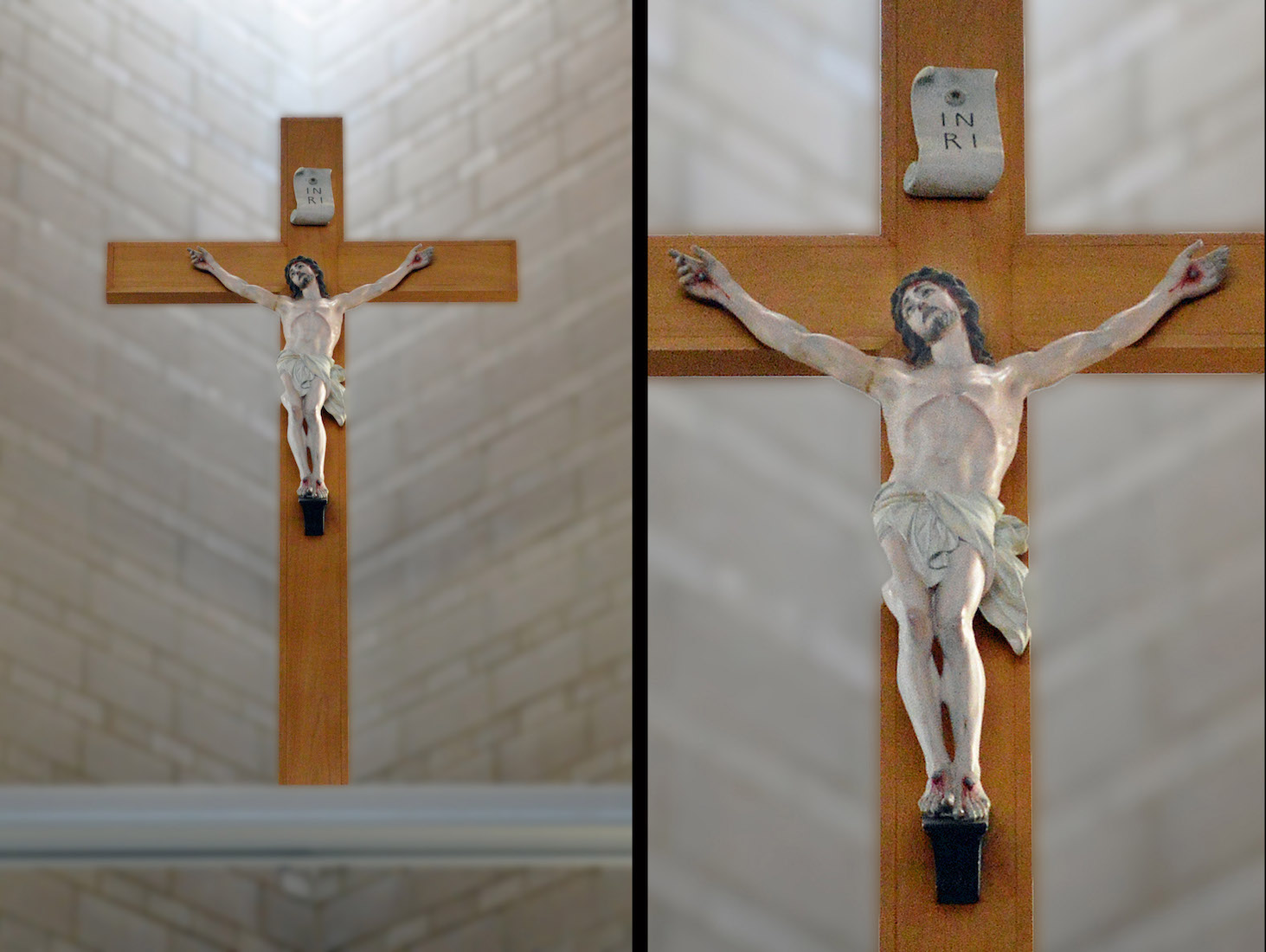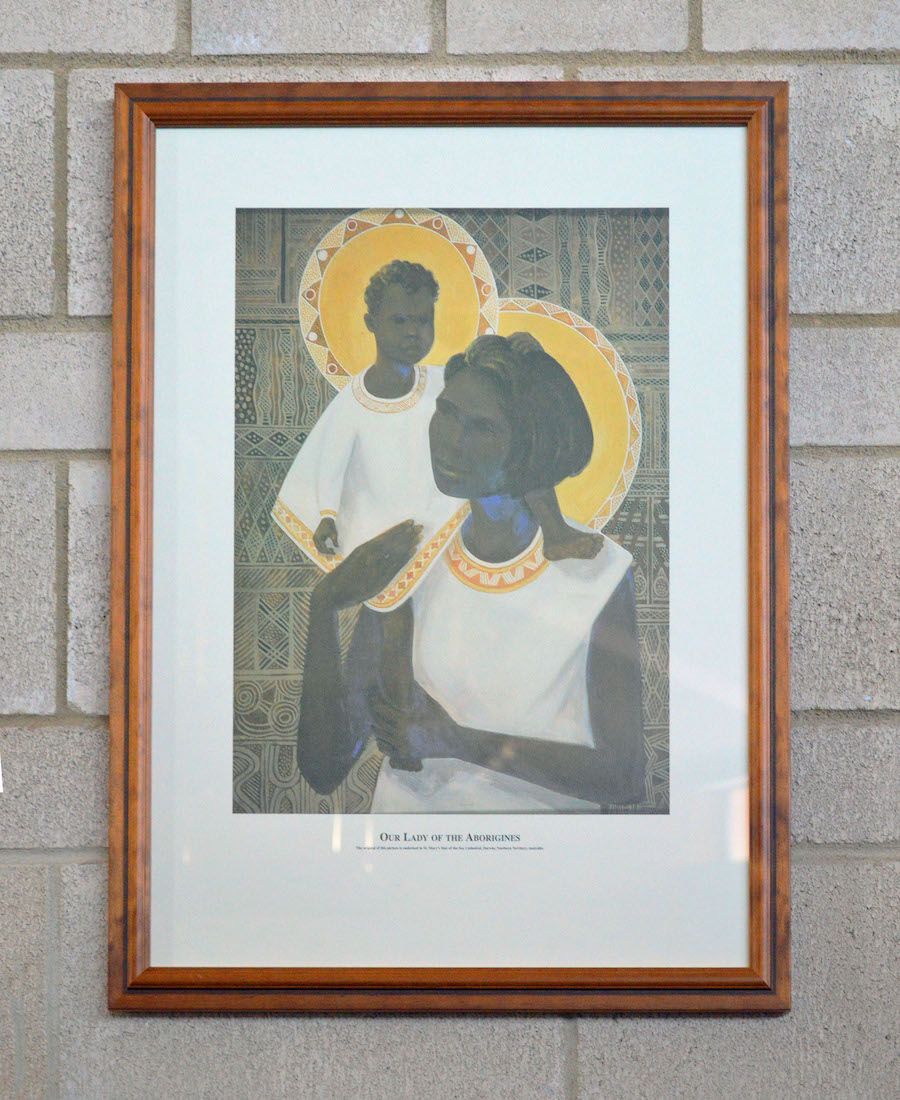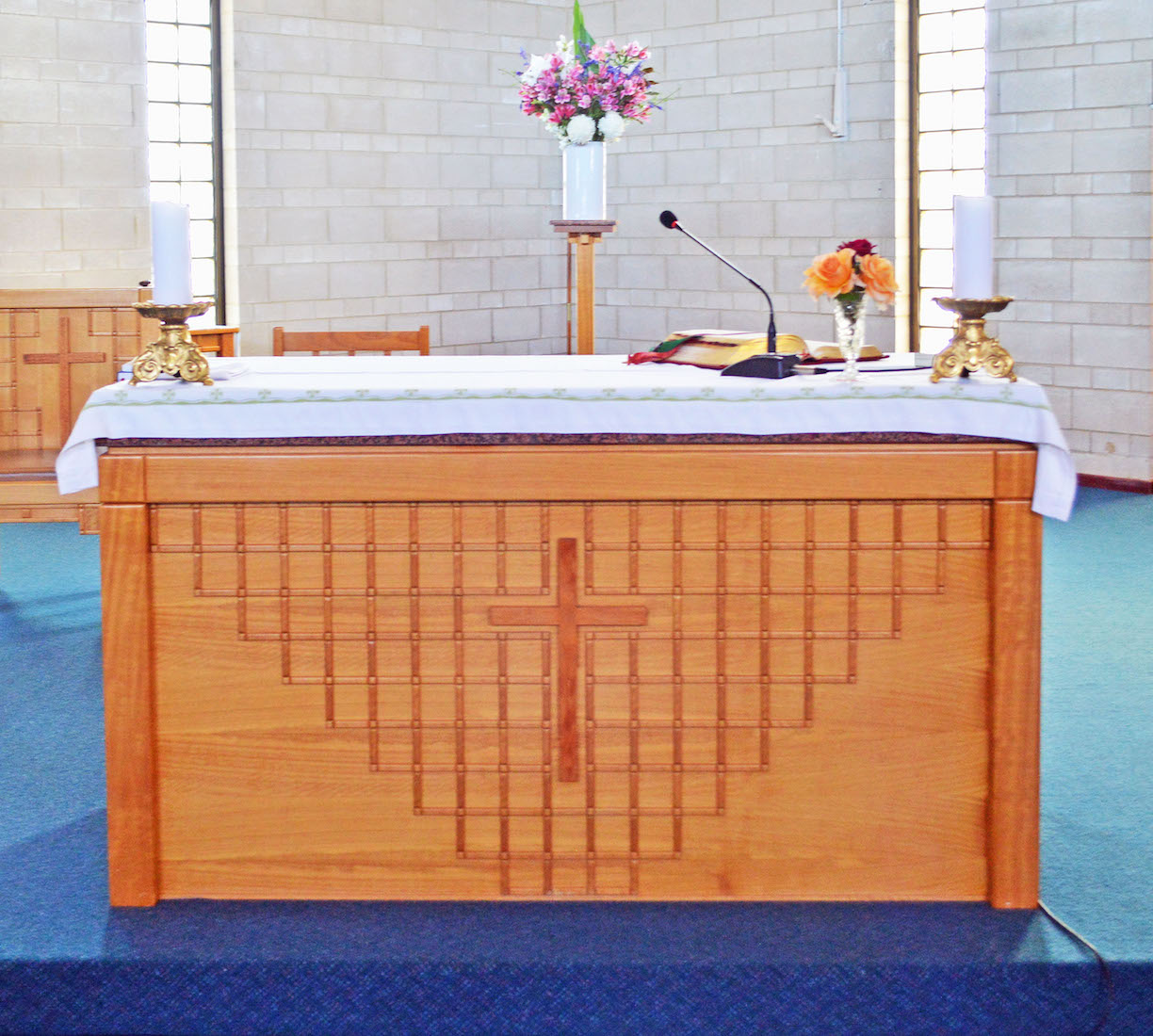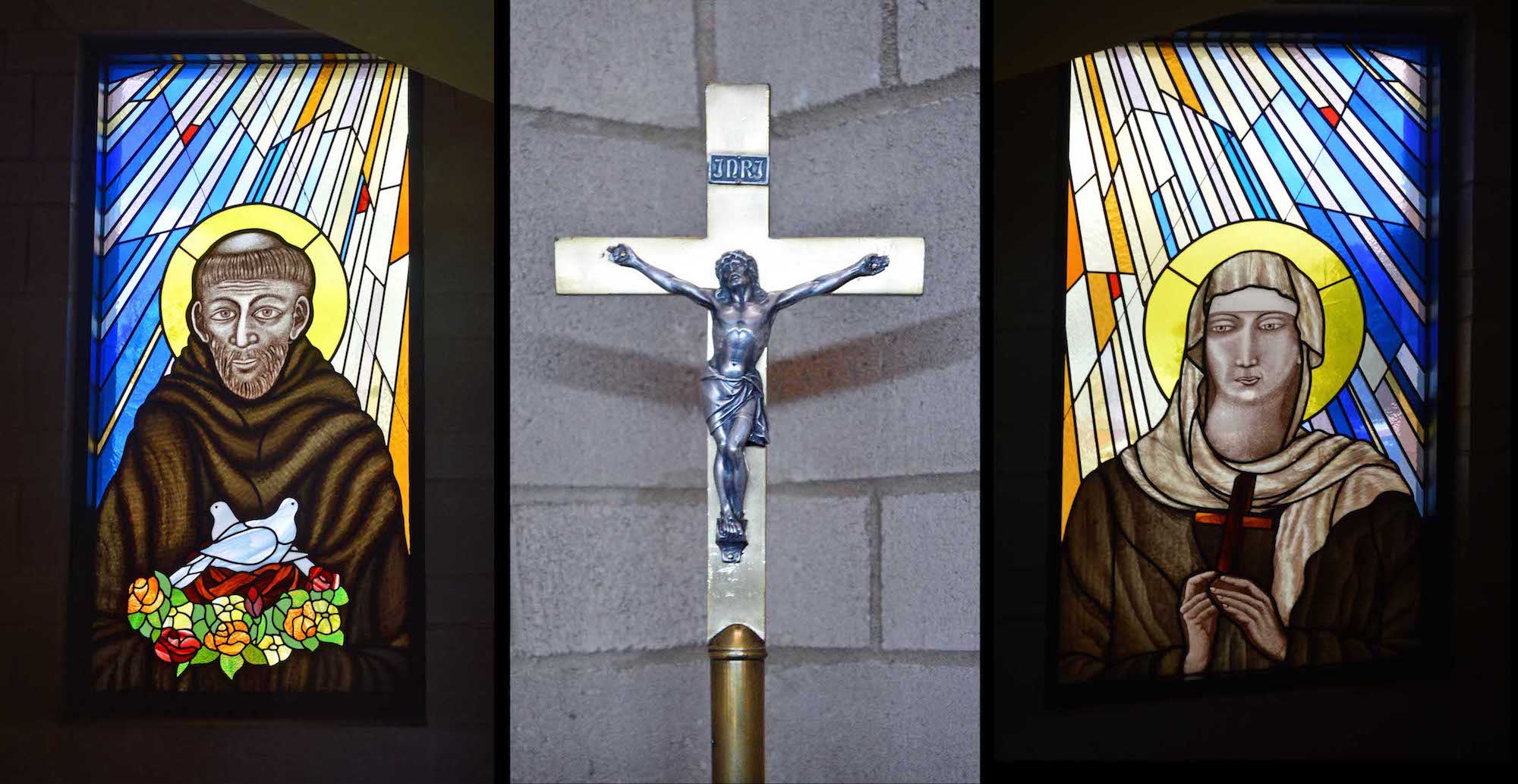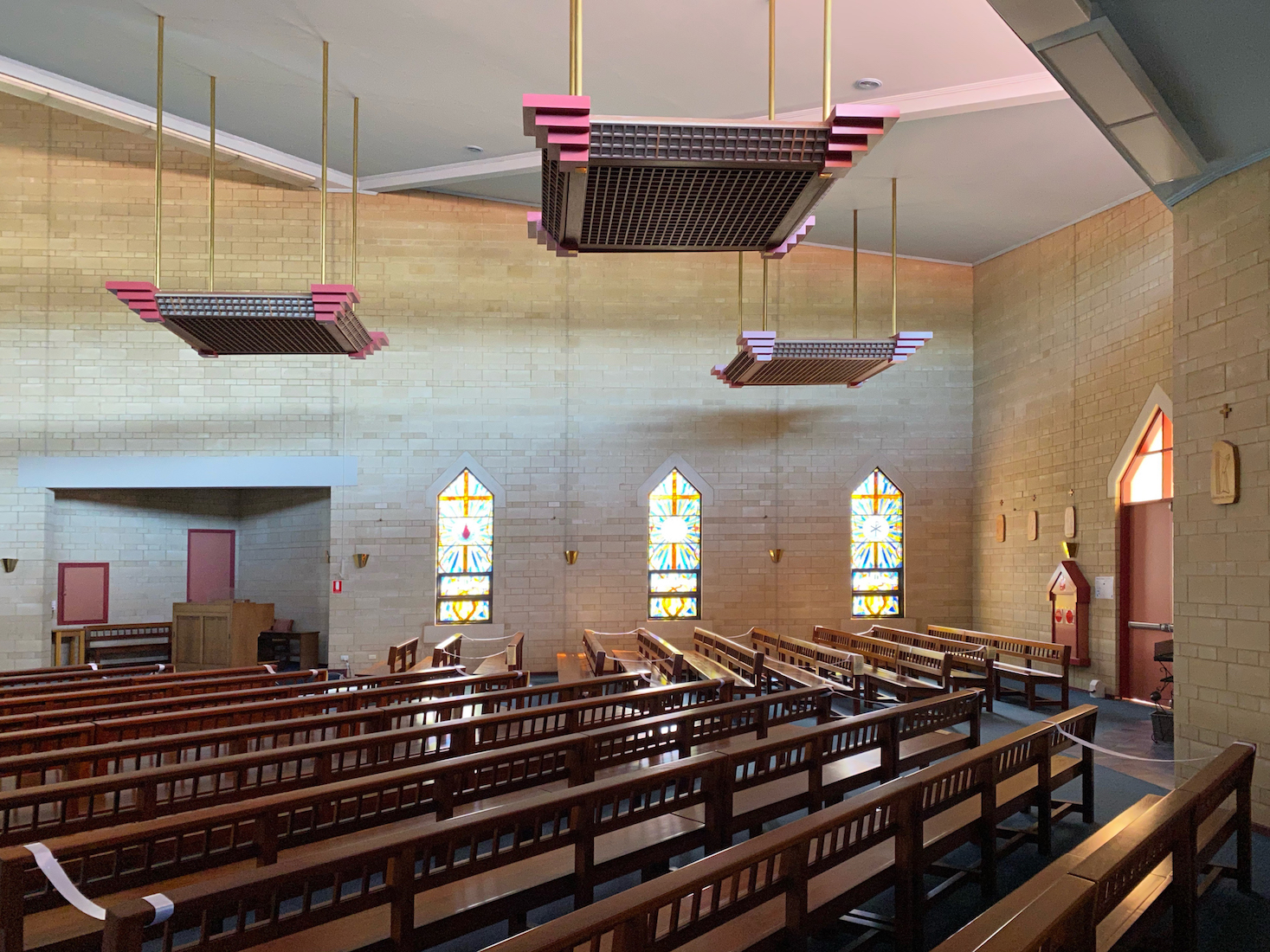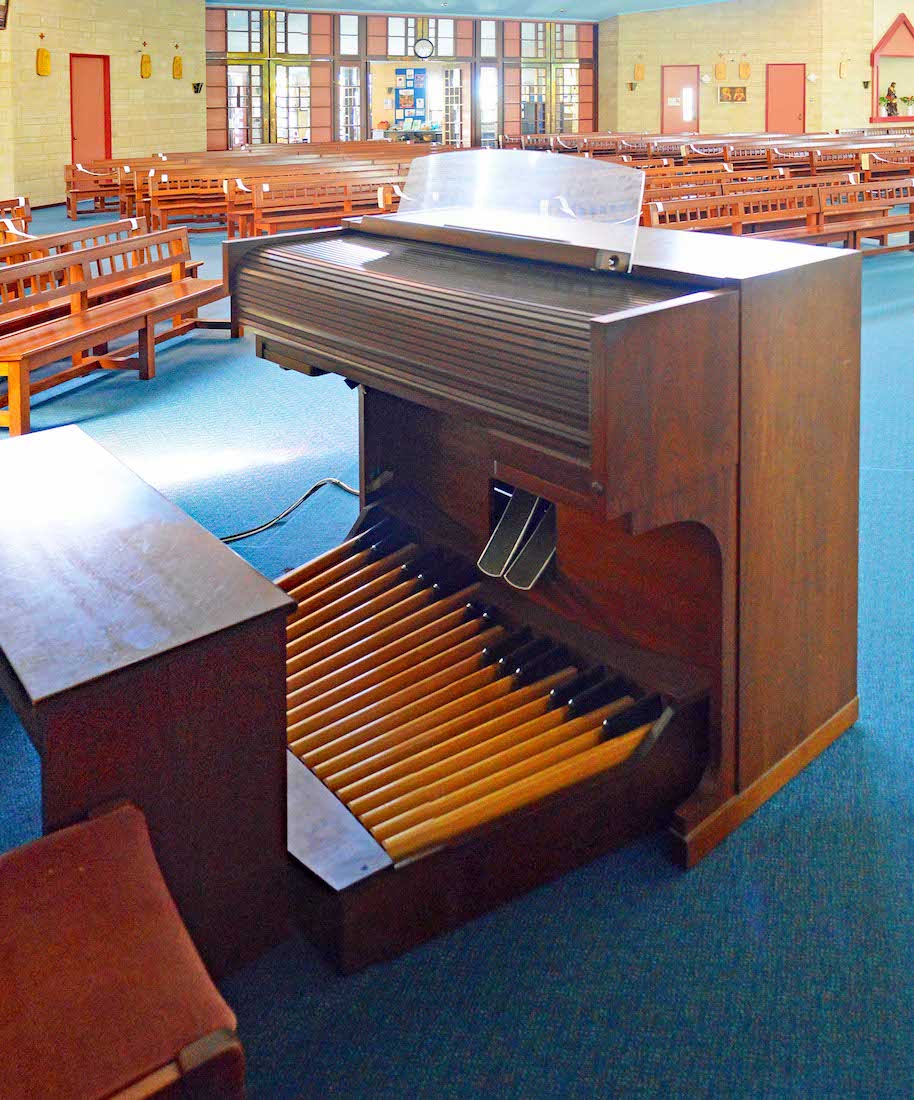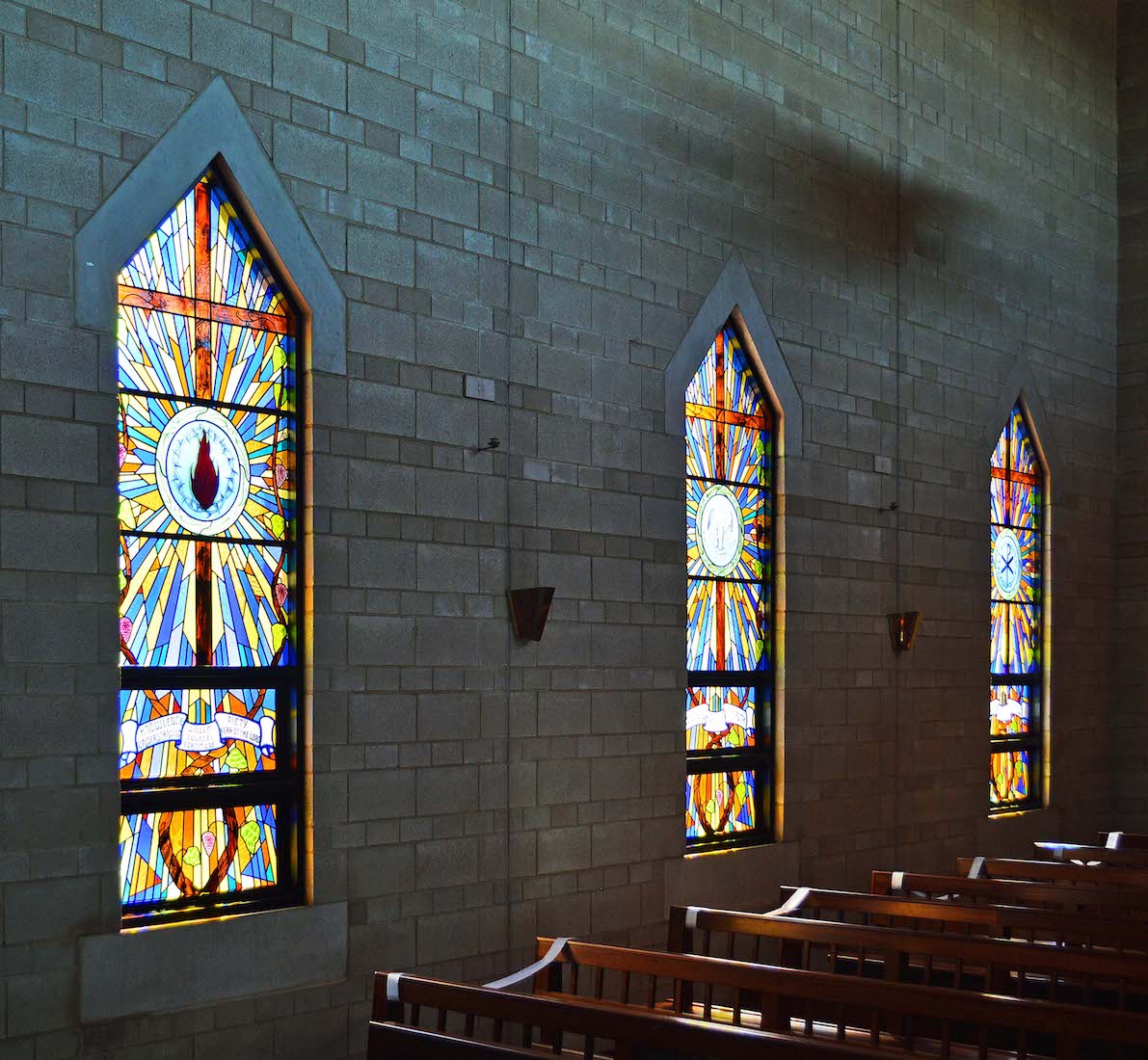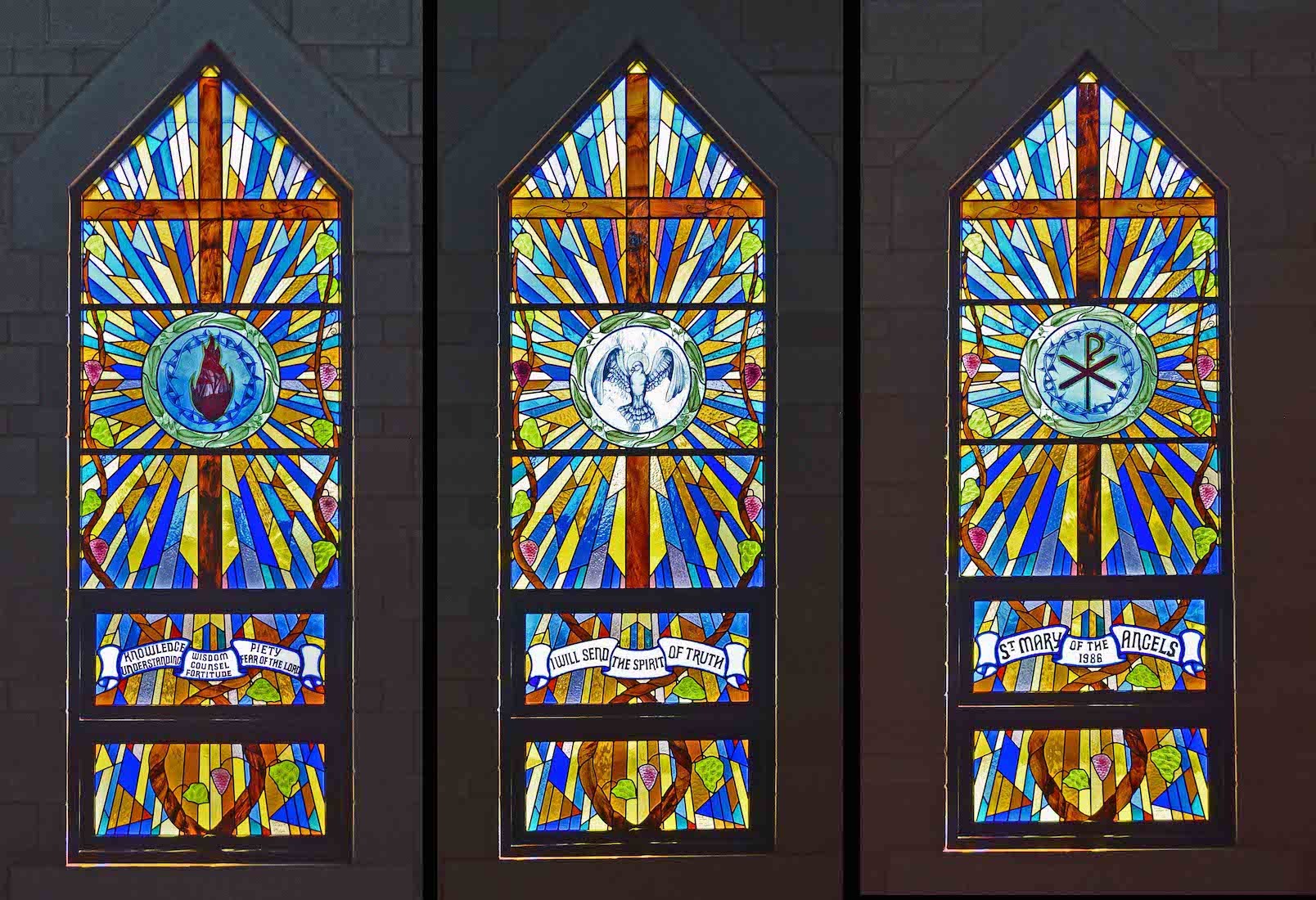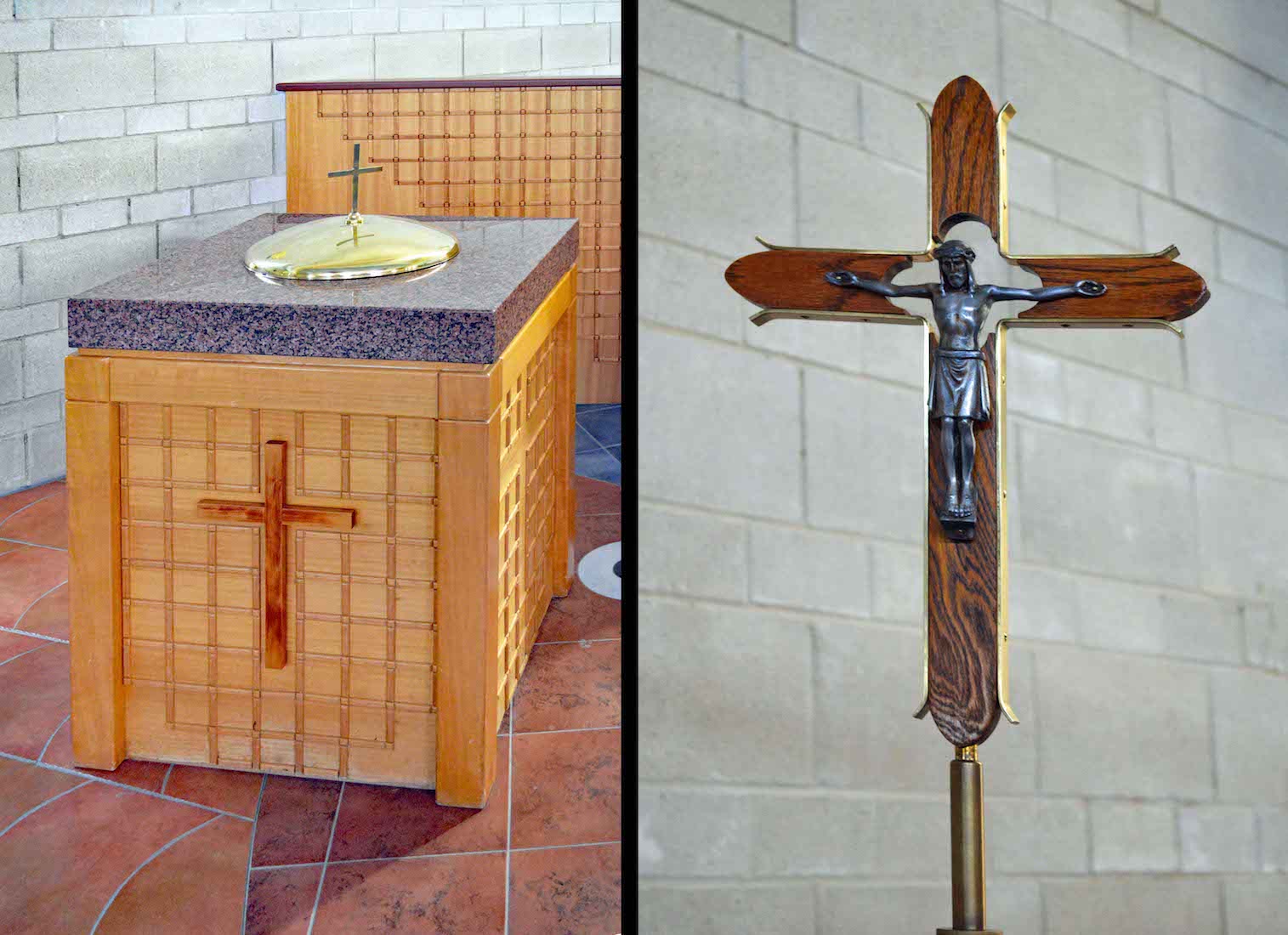
The font is used for the rite of baptism. The brass cap is removed to reveal a shallow bowl containing water. Here babies are baptised into Christ and into the Christian community. •• The processional crucifix is used to lead processions of clergy and choir into and out of services. INDEX
42. AMBO
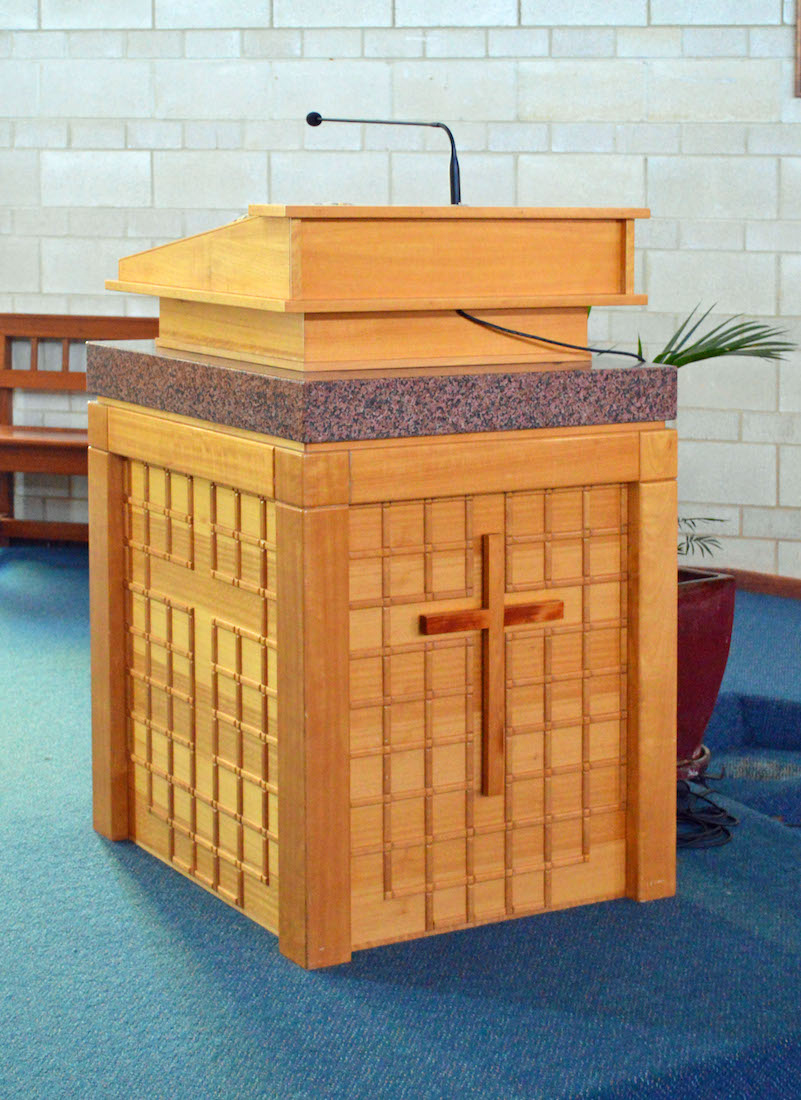
On the other side of the sanctuary stands a matching piece of furniture called an ambo. Many churches have a lectern from where the Scripture is read, and a pulpit, used for a preaching ministry. In many Catholic churches and cathedrals these two roles are combined with the use of an ambo.
43. CENTRAL CRUCIFIX
This large crucifix stands high up in the Eastern corner of St Mary’s. It is a central reminder that Christ died for the world.
44. ABORIGINAL MADONNA AND CHILD
This painting to the right of the sanctuary, entitled ‘Our Lady of the Aborigines’ is a reminder that different races and cultures are likely to view Biblical events through different eyes.
45. ALTAR
At the centre of the sanctuary stands the altar. It is from here that the Elements of the Eucharist are administered. The Church sanctuary was rearranged by Father Leon (2000 – 2008). He brought the priest’s chair forward and closer to the people and also had renovations done to bring the sanctuary and altar closer to the congregation. This was in line with Vatican recommendations of the 1960s.
46. SANCTUARY ALCOVES
There is an alcove on each side of the sanctuary, neatly constructed to fit the angular patterns of this Church. From the exterior these alcoves are invisible, apart from the windows, being tucked into the chapel extensions. I found a crucifix here, and the windows depict St Francis of Assisi, and St Teresa of Avilon? The windows are in the style of the narthex windows.
47. SOUTHEAST NAVE WALL
Leaving the sanctuary, we explore the final section of the nave. Along this wall are three more colourful windows. To our left is a recessed space for the organ, with a private area in behind.
48. ORGAN
A small electronic organ stands in this alcove – one which seems to me to be completely inadequate for this large nave. I also now realise that I have seen no loud speakers or amplification equipment in the nave. I am suddenly suspicious of those large square light fittings!!
49. SOUTHEAST NAVE WINDOWS
There are three colourful windows along the Southeast wall of the nave. These match the windows on the opposite wall with a common overall design, but with varying circular emblems and texts.
50. WINDOWS DETAIL
The left window shows a flame surrounded by a crown of thorns. The text shows the Seven Gifts of the Holy Spirit, which according to the Catechism of the Catholic Church are Wisdom, Understanding, Counsel, Fortitude, Knowledge, Piety, and Fear of the Lord. (1 Cor 12:7–11). •• The second window depicts a dove along with the text ‘I will send the Spirit of Truth’. (John 15:26) ••• The third window shows a Chi-Rho symbol (for Christ) with text ‘St Mary of the Angels 1986’. This completes our exploration of this Church.
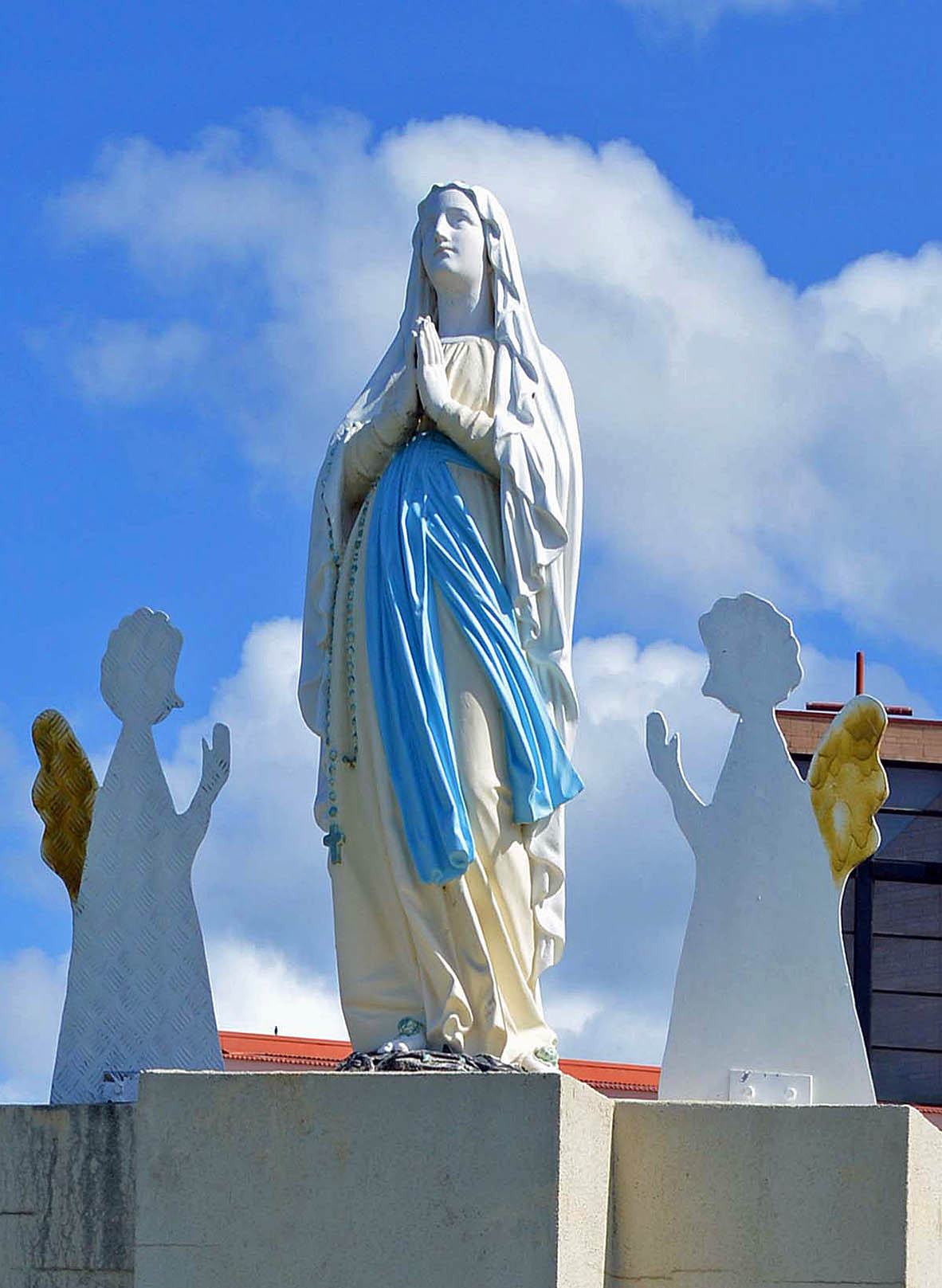
CONCLUSION
I hope you have enjoyed visiting St Mary of the Angels Church with me. What an interesting and creative church it is!
I am happy to receive constructive comments or corrections concerning this website. The best websites are the ones which have no errors! I am grateful to my wife Margie who came to Port Lincoln with me, and who has proof-read these pages.
I did have difficulty finding out facts about the building itself – in particular details of the windows and the statues. I would appreciate any input on these or other items within the Church.
The Port Pirie Diocese (of which this Church is part) has a website with link:
https://www.pp.catholic.org.au/about-our-parishes/port-lincoln
There is also a pdf file which contains a valuable interesting history of the Church, although not very much about the actual building. It can be found at:
https://www.pp.catholic.org.au/__files/f/2228/History%20Port%20Lincoln%20.pdf
The photographs which appear on this site can also be found in higher resolution at:
https://www.flickr.com/photos/paulscottinfo/sets/
Site created 12 / 2020
Paul Scott

